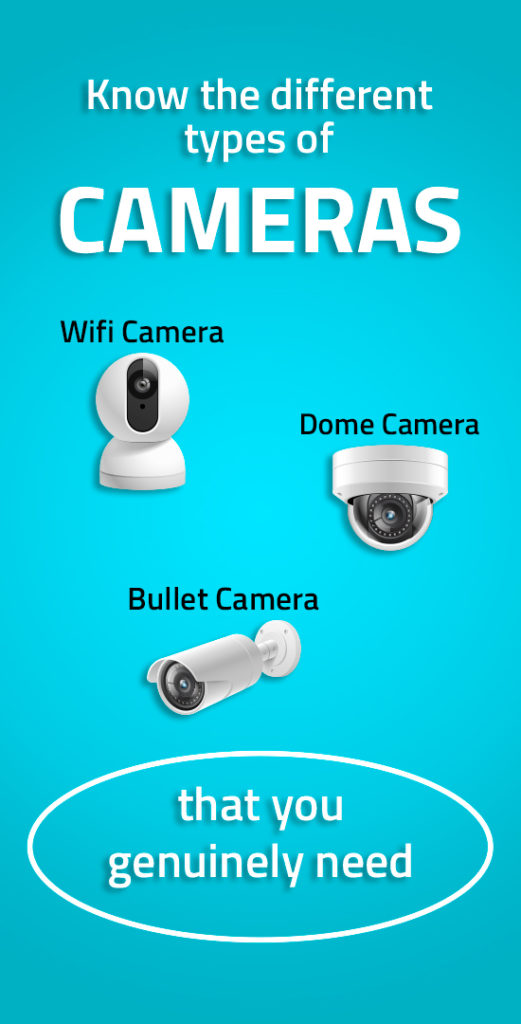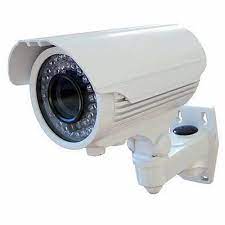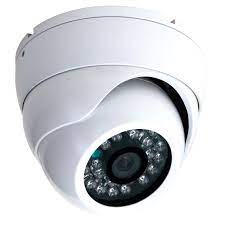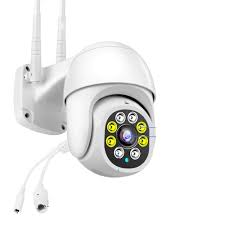CCTV (Closed-Circuit Television) cameras play a crucial role in enhancing security and safety in various aspects of life.
Let’s learn about a few different types of cameras and their productivity.

Bullet Camera:
- Bullet cameras are cylindrical, elongated cameras that resemble a bullet or a small tube.
- They are typically used for outdoor surveillance and can be easily mounted on walls or ceilings.
- Bullet cameras are known for their long-range and focused view, making them suitable for monitoring specific areas.
- They often come with infrared (IR) LEDs for night vision and are weatherproof for outdoor use.

Dome Camera:
- Dome cameras are named after their dome-shaped housings.
- They are commonly used in indoor settings, but there are outdoor versions as well.
- Dome cameras are more discreet and blend easily into various environments, making them suitable for surveillance in retail stores, offices, and homes.
- Some dome cameras have a movable dome cover that can obscure the direction in which the camera is pointing, adding an extra layer of privacy.

IP Camera (Internet Protocol Camera):
- IP cameras are digital cameras that transmit video data over an IP network, such as the internet or a local network.
- They are versatile and can be used for both indoor and outdoor surveillance.
- IP cameras offer high-resolution video quality, remote viewing capabilities, and various advanced features like motion detection, two-way audio, and pan-tilt-zoom (PTZ) control.
- They can be connected to an NVR (Network Video Recorder) or a computer for recording and storage.
Wi-Fi Camera (Wireless IP Camera):
- Wi-Fi cameras are a type of IP camera that connects to a network wirelessly through Wi-Fi.
- They are easy to install and can be placed almost anywhere within the range of a Wi-Fi network.
- Wi-Fi cameras are popular for home security and monitoring because they eliminate the need for complex wiring.
- Many Wi-Fi cameras offer remote access through smartphone apps, cloud storage options, and motion-triggered alerts.

Types of Wi-Fi Cameras:
- Fixed Wi-Fi Cameras: These have a fixed lens and provide a stationary view of an area.
- Pan-and-Tilt Wi-Fi Cameras: These can be remotely controlled to pan (move horizontally) and tilt (move vertically) to cover a wider area.
- Pan-Tilt-Zoom (PTZ) Wi-Fi Cameras: These offer the ability to pan, tilt, and zoom in and out for close-up views of specific areas.
- Battery-Powered Wi-Fi Cameras: These are wireless and run on batteries, making them highly flexible for placement but requiring occasional battery replacement or recharging.
- Outdoor Wi-Fi Cameras: Designed for outdoor use, they are weatherproof and can withstand the elements.
- Indoor Wi-Fi Cameras: These are designed for indoor use and may lack weatherproofing features.
Facilities of Wi-Fi Cameras:
- Remote Access: View live video and recorded footage remotely via smartphones, tablets, or computers.
- Motion Detection: Receive alerts when motion is detected in the camera’s field of view.
- Two-Way Audio: Communicate with people at the camera location through built-in microphones and speakers.
- Cloud Storage: Store video footage in the cloud for easy access and backup.
- Night Vision: Many Wi-Fi cameras come with infrared LEDs for clear video in low-light or dark conditions.
- Mobile Alerts: Receive push notifications or email alerts when the camera detects motion or other predefined events.
- Easy Installation: No need for complex wiring; simply connect to your Wi-Fi network.
- Expandability: Some systems allow you to add more cameras to cover multiple areas.
The specific features and capabilities of Wi-Fi cameras may vary based on the model and brand.
